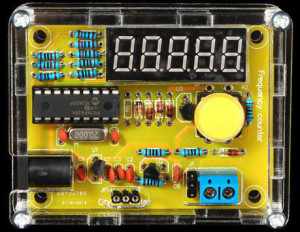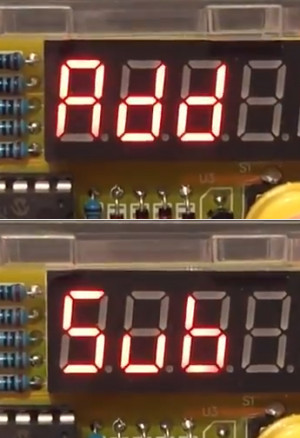Frequency counter and crystal tester kit: 1 Hz - 50 MHz
January 02, 2019
on
on
 Not always the case, but here’s a video of unpacking and assembly that’s nice and easy. No fiddly SMD soldering, (almost) no frantic acceleration of the video, no hysterical editing. Everything is shown with the easy rhythm of an electronicist who gets his kicks with good old fashioned through-hole components. He savours every moment and dreams of the moment of ecstasy when he first applies power to the circuit and sees if he’s been successful.
Not always the case, but here’s a video of unpacking and assembly that’s nice and easy. No fiddly SMD soldering, (almost) no frantic acceleration of the video, no hysterical editing. Everything is shown with the easy rhythm of an electronicist who gets his kicks with good old fashioned through-hole components. He savours every moment and dreams of the moment of ecstasy when he first applies power to the circuit and sees if he’s been successful.This kit is an affordable, dual purpose test equipment: frequency counter and crystal tester. It has five standard 7-segment LED displays. Its measuring range is from 1 Hz to 50 MHz. And all for this price!
Modest but convincing specifications
The maximum signal amplitude that can be measured is 30 V. Switching of the measuring range is automatic. The microcontroller, a PIC 16F628, is obviously supplied preprogrammed.If you are using batteries, and put the device in battery saving mode, it will switch itself off after 15 seconds of inactivity. You can also use external power via a standard USB cable.
This tester will also give the resonant frequency for most modern crystals
So that the kit is also pleasing to the eye, it is supplied with an elegant transparent box. The whole thing is easy to assemble.
Offset Frequency
 If the frequency counter is to be used in a short wave receiver or transceiver, it is possible to get it to add or subtract an offset from the measured frequency. (Such an offset often corresponds to the intermediate frequency).
If the frequency counter is to be used in a short wave receiver or transceiver, it is possible to get it to add or subtract an offset from the measured frequency. (Such an offset often corresponds to the intermediate frequency).The logic level on RA5 (pin 4) of the PIC 16F628 causes it to change from basic frequency counter mode to offset compensation mode. The instructions explain how to do this.
Here is a quick overview of the programming function menus:
- Add: The measured frequency is used as an offset value added to subsequent measurements.
- Sub: The measured frequency is used as an offset value subtracted from subsequent measurements.
- Zero: Reset the offset value to zero ; the value saved previously is erased.
- Table: Select an offset from one of the following saved values:
455.0 (kHz), 4.1943 (MHz), 4.4336 (MHz), 10.700 (MHz).
- PSave / NoPSV: activate or deactivate the automatic sleep mode (power-saving on/off)
- Quit: Quit programming mode, Abandon changes.
If the crystal testing function interests you, you will find below a second video which compares the results of this tester for around £ 16 / US$ 22 / € 18 with those of an antique Systron Donner 6152 reference frequency counter (with Nixie tubes).
Read full article
Hide full article


Discussion (5 comments)